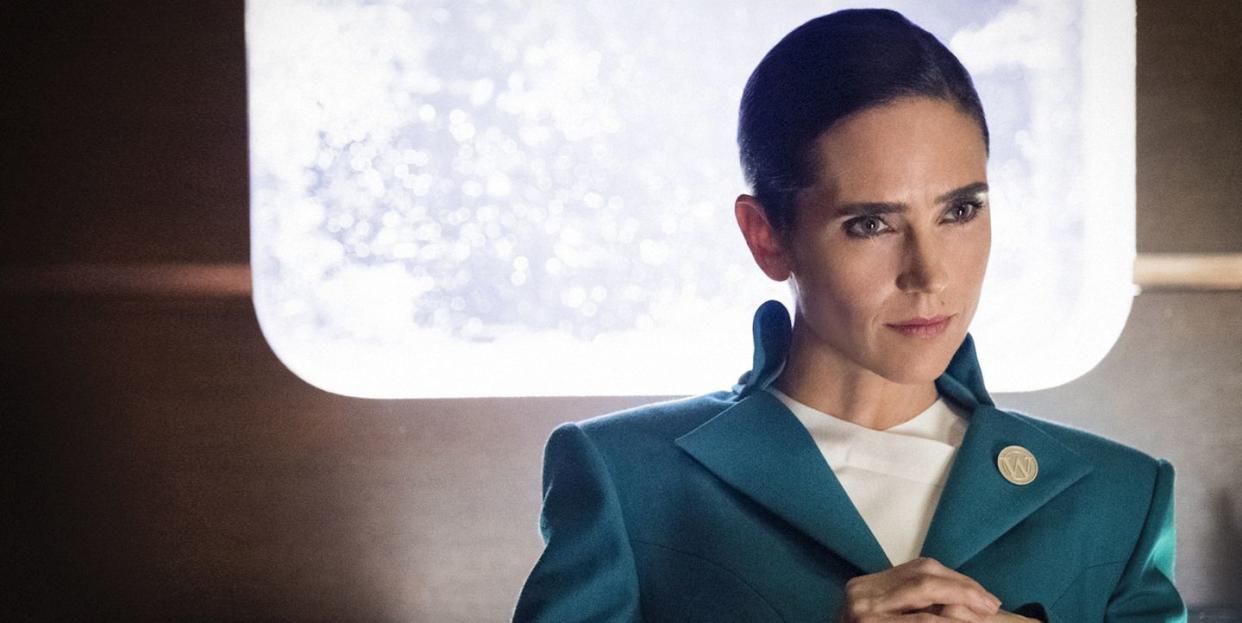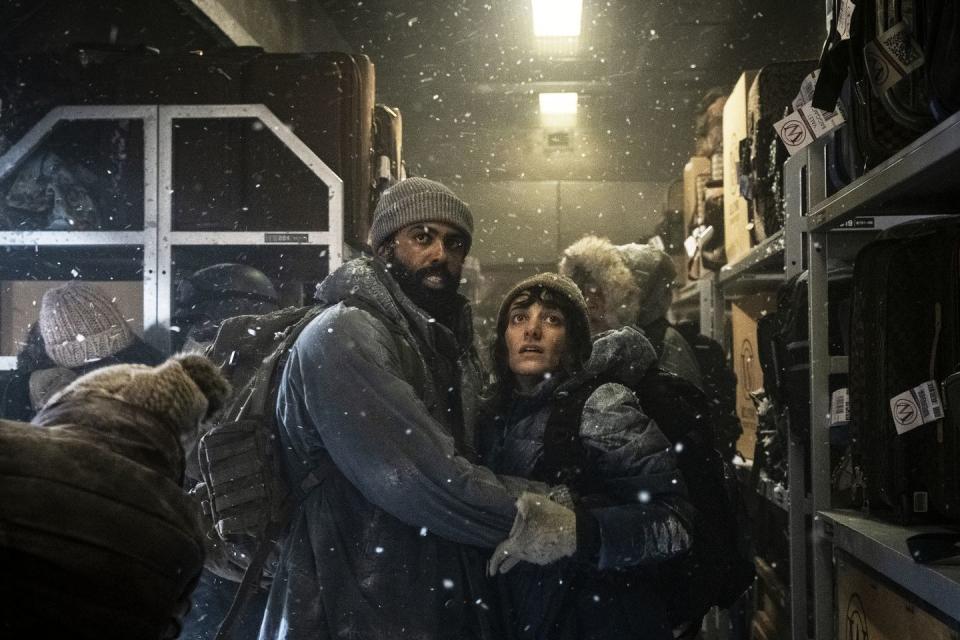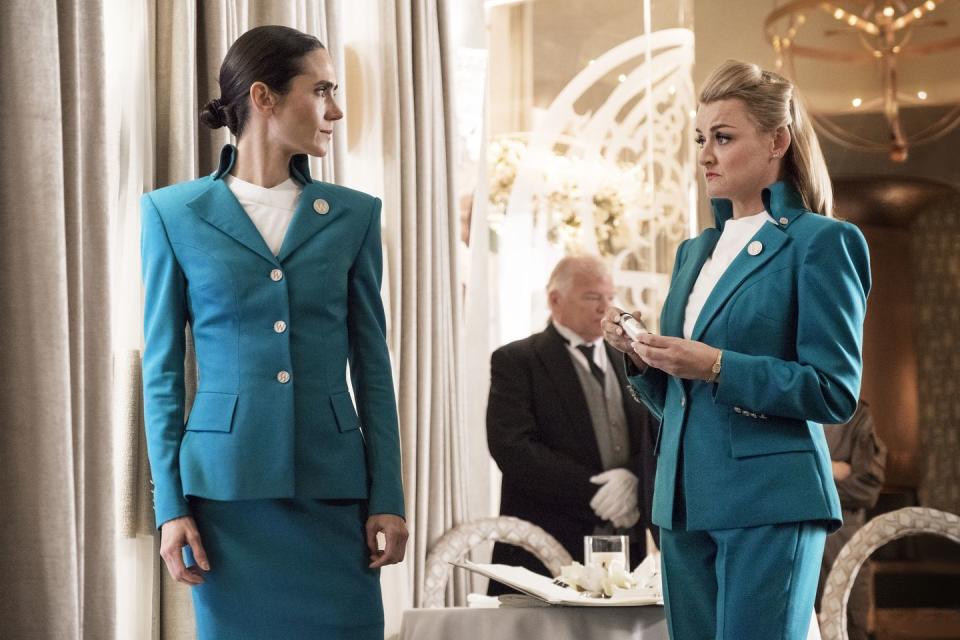Is Snowpiercer the First Show of a New Eat the Rich Era?

When the new series Snowpiercer premieres May 17 on TNT, it might seem familiar. The story the series tells—about the last living members of the human race riding out a new Ice Age on a train perpetually circling the globe—first appeared in the 1982 graphic novel Le Transperceneige and later in director Bong Joon-ho’s 2013 film Snowpiercer, but the way it's presented in the new series will be decidedly unlike what you’ve seen before.
An aspect of that is that the series broadens the world of the train and the people living on it—after all, a TV series has more time than a movie to drill down on characters and explore storylines—but another is that it’s airing in a time when our own class divides have perhaps never been more apparent.
We’re living in an era when the one percent are indulging in covert beauty appointments, hoarding gourmet groceries, and fleeing crowded cities for second homes that can serve as bespoke bunkers, and it’s easy to see part of that reality reflected on screen. Since class is literally what divides the passengers on the train—the tail of which is practically a gulag; the first-class car could be the Orient Express—it’s not only possible to enjoy the series as an exciting bit of sci-fi escapism, but also a big-budget mirror held up to our own current moment.

“Snowpiercer has classic sci-fi bones; it’s George Orwell, The Wizard of Oz, or The Island of Doctor Moreau,” says show runner Graeme Manson, a veteran of Orphan Black. “They all have examples of how authoritarianism trickles down. It’s classic. And despite the fact that this premise is so wildly existential and implausible—that there’s a perpetual moment machine and the last surviving members of humanity are on it as it round the globe—it’s a great generator for interesting heroes and underdogs.”
In the case of this series, the underdogs include Andre Layton (played by Daveed Diggs) who’s pulled from the tail of the train to help solve a crime close to the front and given a look at the way the other classes—as well as the train’s crew, including a charmingly chilly Jennifer Connolly—live in comparison to his own dire circumstances.
“The overall theme of the first season is rebellion and revolution,” Manson says. “That’s about coming out of the tail and seeing the privilege of how the front of the train lives. The waste and inequity are seen, and that’s certainly what anyone would see. The inequalities in our society are stark, and that’s something the train touches on.”

The decisions that went into making those inequalities apparent in ways both big and small were complicated.
“The train is made up of 1,001 cars and is 10 miles long, so my first job was mapping out the different socioeconomic classes along the length of the train,” says Barry Robison, the show’s production designer. “Life in the tail cars is brutal, it had to be dark and textural with people making things out of nothing. So, the tail is mysterious, and strange, then come the middle-class cars—done in taupe, green, and nondescript colors—and by the time you get to first class, it’s my projection of what heaven would be. It’s all white and luxe materials.”
In the pilot episode, when Diggs’s Layton finds himself in a first-class dining room, it’s jarring. The world he’s come out of is cramped and dingy, a place where food is rationed, and people are just barely getting by. But the room in which he finds himself, just up that same train, wouldn’t be out of place in a five-star hotel. The colors are muted, the wallpaper is gently textured, the floors are comfortably carpeted, and a fire gently roars inside a copper-plated fireplace. “These,” Robison explains, “are all the elements that convey wealth on that train.”
Part of the fun of the show is watching those barriers between the classes break down. Whether it’s rebels from the tail making their way forward or first-class swells slumming it in a mid-train nightclub, the way that people in Snowpiercer push into places where they aren’t meant to be gives the series a good deal of its frisson. It’s also important to note, Manson says, that none of the characters can be judged solely on the car in which they live. “Yes, the first-class characters may be villains, but you should understand why they are that way and how they see themselves,” he says. “Nobody thinks that they’re a villain.”
All of this will likely be top of mind for viewers tuning into the series as class divides in our own reality become more pronounced. Still, while Snowpiercer highlights the kind of inequality that’s impacting our real world as much as it is the fictional one of the series, don’t expect to tune to find any concrete answers. “At the end of the day, this train is struggling with the search for a better future,” Manson says, “which is what we’re all doing right now.”
You Might Also Like

